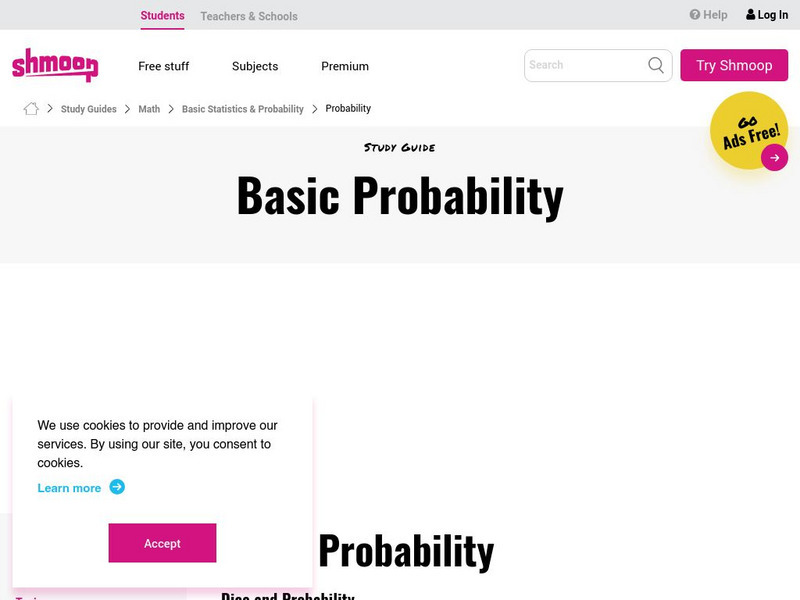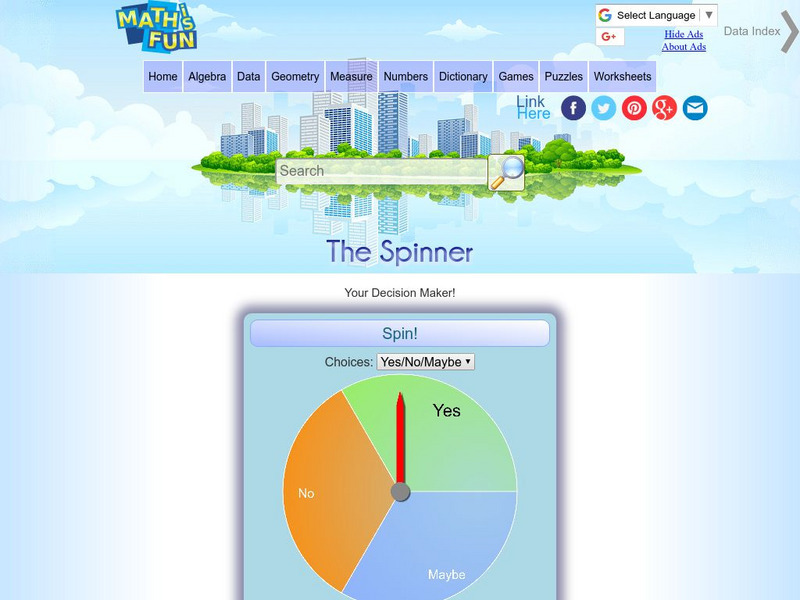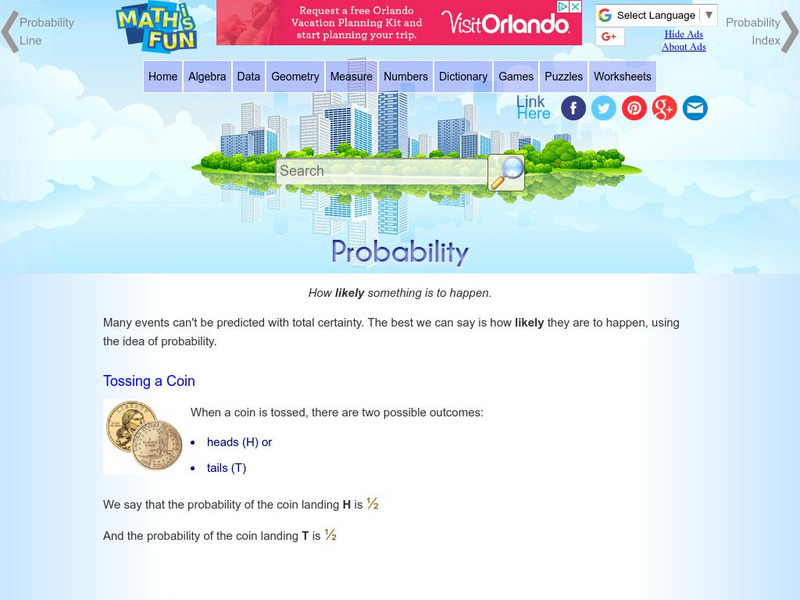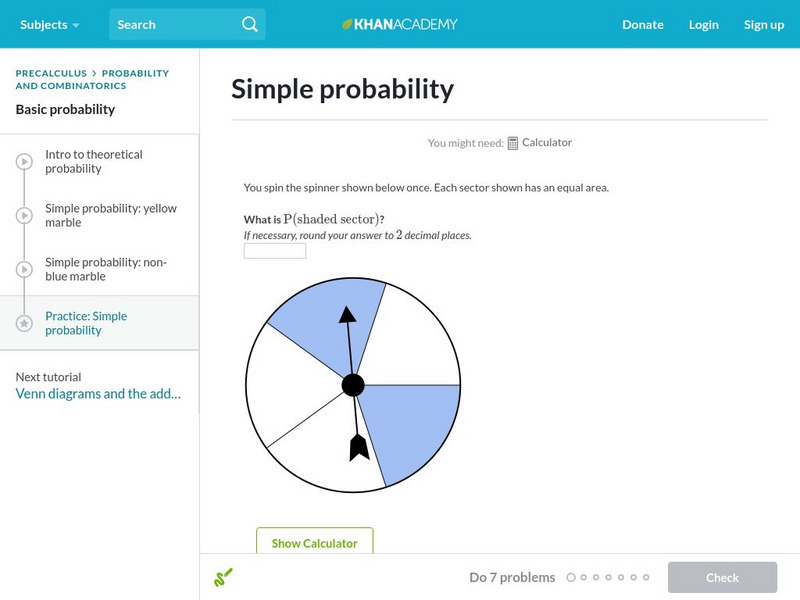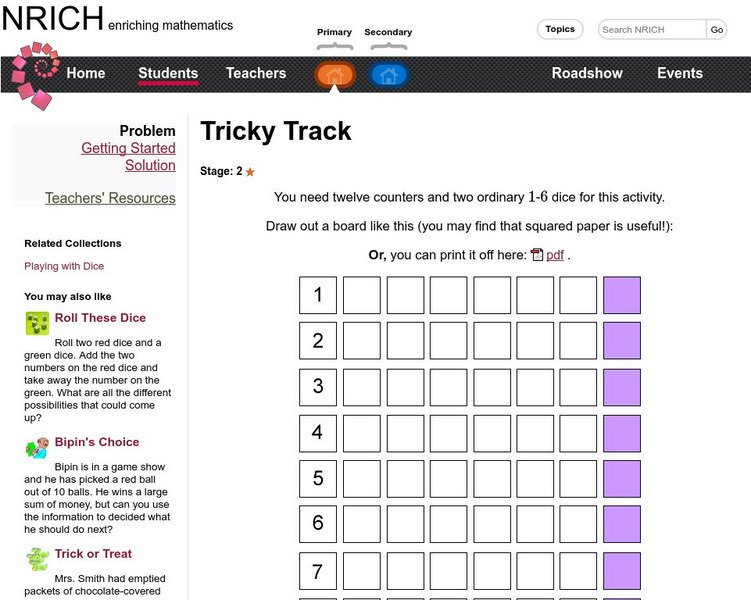Hi, what do you want to do?
Curated OER
Radon Alert: Understanding Odds
In this radon alert: understanding odds worksheet, 5th graders predict results of rolling dice and record data in a chart, then compare odds of events and occupations, then compare that with radon exposure.
Curated OER
Unexpected Answers
Students consider probability problems with unexpected and surprising answers.
Curated OER
Phone Button Boggle
For this phone button boggle worksheet, students identify the number of math words they can find on a phone keypad according to given directions. This one-page worksheet contains one problem. Answers are provided.
Curated OER
Rolling For Value
Learners participate in a lesson plan to comprehend the concept of probability while rolling dice. They recognize patterns while making observations and recording the data for each roll. Students also review place values while playing a...
Curated OER
Creating a Bar Graph Using a Spreadsheet: Dice Rolling Probabilities
Tenth graders explore the concept of spreadsheets. They create a simple spreadsheet and chart from given data. Students perform basic formatting procedures on their chart. They use spreadsheet functions to perform calculations.
Curated OER
What Are the Risks?
Middle schoolers use dice to determine the risk of being exposed to radon. They practice using new vocabulary related to probability and ratios. They make predictions about the results and record their observations.
Curated OER
Counting Principle
In this counting principle worksheet, students solve 10 problems by applying the counting principle to each one. First, they determine the number of possible outcomes in a coin toss. Then, students the number of different cards with the...
Curated OER
Tree Diagrams
In this tree diagram instructional activity, students read story problems. From the given information, they draw tree diagrams to determine the total possible number of outcomes. This one-page instructional activity contains ten problems.
Curated OER
Combinations & Permutations
In this combination and permutations activity, learners identify possible outcomes. They determine if the given situation is a combination or permutation and solve accordingly. This one-page activity contains 10 multiple...
Curated OER
The Fair Factor
Students participate in playing many games to determine if they are fair or not. They create their own game that is fair to play with their classmates.
Curated OER
Dominoes
Fourth graders solve a dominoes word problem, calculating all the possible outcomes for a sequence of events. They discuss the problem, apply counting strategies, create a tree diagram, and write an explanation of how they solved the...
Curated OER
Statistics and Probility
Seventh graders collect data and make predictions. In this geometry lesson, 7th graders work in tiers collecting data and plotting it. They make inferences and predictions about their collected data.
Curated OER
Rules of Sign Change
Young scholars manipulate negative and positive numbers. In this integers lesson, students move through three activities exploring negative and positive whole numbers. A number line, cardboard function representation, and solving...
Curated OER
Making Learning a Game
A game lesson can be a way to explore a variety of concepts with your students.
Mathigon
Mathigon: Probability and Discrete Math: Predicting the Future
This lesson focuses on probability theory for predicting the outcome of flipping a coin, and then flipping it multiple times.
Math Is Fun
Math Is Fun: Activity: An Experiment With a Die
Explore probability with this dice experiment. Includes instructions for recording data on a table, creating a graph, questions to investigate, a probability formula, and a discussion of probability.
Khan Academy
Khan Academy: Theoretical and Experimental Probability: Coin Flips and Die Rolls
A set of questions on experimental and theoretical probabilities using coins and dice. Answers are accompanied by explanations.
Shmoop University
Shmoop: Basic Statistics & Probability: Basic Probability
The mathematics resource investigates basic probability. Students learn about the topic through notes and examples. The tutorial consists of practice exercises to check for comprehension of the concept.
Math Is Fun
Math Is Fun: The Spinner: Your Decision Maker
This handy math spinner does most of the work for you. You can choose whether to use numbers, dice, yes/no, etc., and how many sections there are on the spinner. Then you spin it and it tabulates the results, creating a bar graph as it...
Math Is Fun
Math Is Fun: Probability
Explains what probability and outcomes are. Presents a formula for calculating probability for a simple dice or marble experiment. Introduces the concept of a probability line and discusses vocabulary used to talk about probability....
Khan Academy
Khan Academy: Simple Probability
Practice finding probabilities of events, such as rolling dice, drawing marbles out of a bag, and spinning spinners. Students receive immediate feedback and have the opportunity to try questions repeatedly, watch a video or receive hints.
National Council of Teachers of Mathematics
Nctm: Figure This: Are Dice Fair or Not?
Is it fair or not fair? That is the question. Try this math challenge where you use your probability and number sense skills to determine whether or not a game is fair. Find out how mastering this challenge can be useful in real life...
SMART Technologies
Smart: Dice and Card Math Games
Kids love dice and playing with decks of cards. Leverage these two great (and inexpensive tools) to help students work on math facts, place value and more.
University of Cambridge
University of Cambridge: Nrich: Tricky Track Game
The directions on this site are for an interesting, two-player dice game named Tricky Track. Grab a partner and play. Do your results surprise you?






















